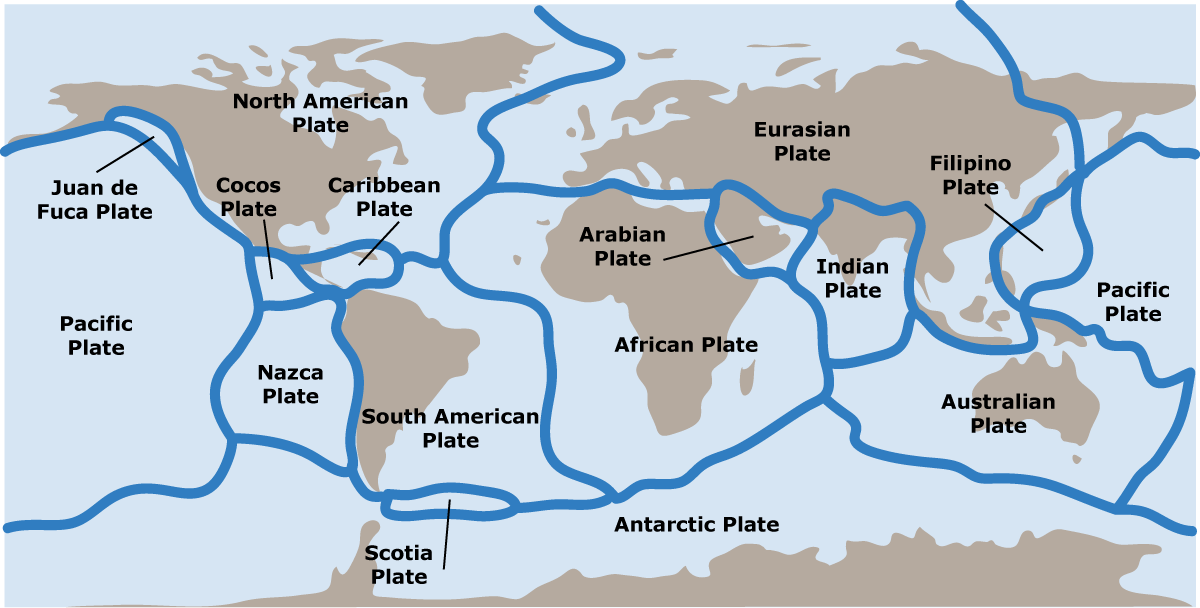Causes of Earthquakes in General
The Earth’s crust consists of seven large lithospheric plates and numerous smaller plates. These plates move towards each other (a convergent boundary), apart (a divergent boundary) or past each other (a transform boundary).
Earthquakes are caused by a sudden release of stress along faults in the earth's crust. The continuous motion of tectonic plates causes a steady build-up of pressure in the rock strata on both sides of a fault until the stress is sufficiently great that it is released in a sudden, jerky movement. The resulting waves of seismic energy propagate through the ground and over its surface, causing the shaking we perceive as earthquakes.

Plate Tectonics
Earthquakes caused by plate tectonics are called tectonic quakes. They account for most earthquakes worldwide and usually occur at the boundaries of tectonic plates.
Induced Earthquakes
Induced quakes are caused by human activity, like tunnel construction, filling reservoirs and implementing geothermal or fracking projects.
Volcanic Earthquakes
Volcanic quakes are associated with active volcanism. They are generally not as powerful as tectonic quakes and often occur relatively near the surface. Consequently, they are usually only felt in the vicinity of the hypocentre.
Collapse Earthquakes
Collapse quakes can be triggered by such phenomena as cave-ins, mostly in karst areas or close to mining facilities, as a result of subsidence.
